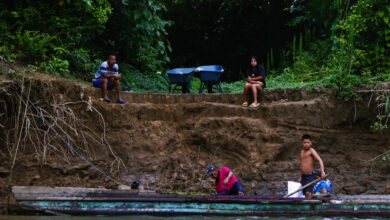What’s wrong with our education?


The Pisa tests and the Timss tests (the biggest international test for the evaluation of education), as well as Unesco’s Serce and Terce tests, in addition to the Simce tests, all of which assess students’ ability to solve problems, reveal the great challenge for education in Latin America, since it shows that if the students come from families with enough resources they will have access to a good education;on the contrary, they will receive poor education.
In Latin America there are difficulties to stimulate the desire in students to participate, to become enthusiastic about what they learn. Students in the region do not solve real-life problems and many young people do not consider that what they learn is going to help them in life.
The young student population of Latin America, compared to those of other continents, solves the practical and daily problems badly.
In our region, textbooks are more voluminous than in developed countries; Also, it is common in our region that if students did not learn a subject in a certain educational level, that void continues to affect students in the following levels, because that failure is not solved; In addition, it is a fact that access to pre-school education in Latin America must be substantially improved.
There is more poverty, inequality and family disintegration than in the northern countries; in addition, less is invested in education, in the attention of students and in teacher training. There is more violence in the homes and parents have lower educational level. More children live in unfavorable conditions than kids from developed nations. The infrastructure and equipment of schools are often precarious; the use of digital technologies is limited or non-existent; time spent on learning is scarce; excessively authoritarian or absent discipline, and the educational policies of governments are unstable, poorly designed and their implementation and effects little evaluated.
It is a fact that the systems with better performance are focused on three things: they demand rigor, that is to say, the level of exigency to the students is very high; They focus on learning few things, but very well, and promote coherence, or progression in learning, this means that one first learns something very well, then one understands, and finally progresses to the next step. In nations with good educational systems, there is an openness towards creative experimentation, for example: if a school is better it can receive more money, but it must use those amounts to help another school with poor results; There are countries that have as policy to send good teachers to schools at a disadvantage; In other states a deputy director of a very good school that wants to become a director, has to first test the ability by giving a 180 degree turn to a school with problems. An infallible strategy in the educational field is to socially enhance the profession of teacher.
It is possible to improve learning outcomes, but this requires a concerted effort byour countries: government and schools, families and local authorities, business and universities, civil society and non-governmental organizations and, as a priority, of teachers and their students.





